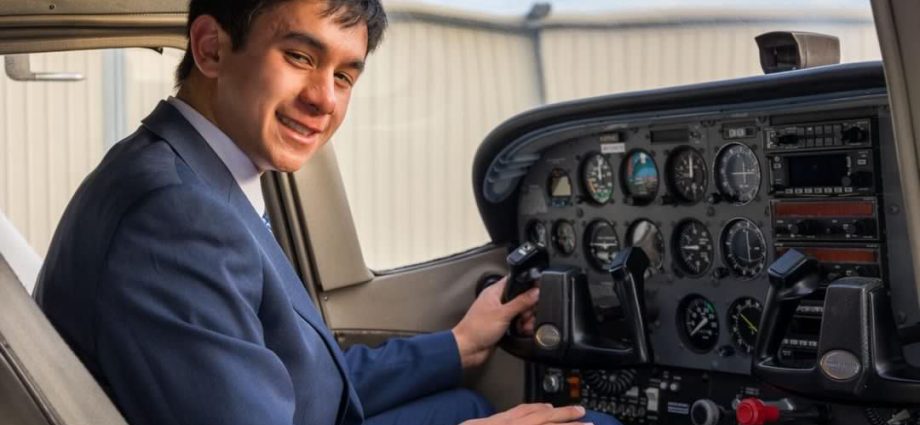When students think about getting their licenses, most of them visualize the driver’s permit test or recall frantically finding a time slot at the local Department of Motor Vehicles (DMV). However, a few envision a license they can use far above the roads, thousands of feet up in the sky.
Junior Osborn Wang’s interest in flying started at a young age when he began watching YouTube documentaries about planes, he said. His interest was further piqued during his journey of achieving his Boy Scout Aviation Merit Badge.
“My scoutmaster is the manager of Reid Hillview Airport, so I was able to get a private tour there,” Wang said. “On multiple occasions, he would let me fly with him as a copilot on his own private plane.”
There are three types of pilot licenses: private, which can fly two to three passengers; commercial, which is required to be hired by airlines; and cargo, which is needed to transport freight and haul, Wang said. He plans to obtain a private pilot certificate but has paused his progress to focus on school.
“I really enjoy the thrill of navigating through turbulence and witnessing incredible views above the clouds,” Wang said. “However, I see flying more as a hobby than a career. I’m more interested in learning how these machines and vehicles work, and my goal is to become an astronautical engineer.”
After years of on-and-off training, Senior Akhil Ramkumar Ramkumar obtained his private piloting license in the summer of 2022, he said. Still, he is only about twenty-five percent of the way toward his main goal of becoming a commercial pilot.
“The next step for me is to fly alongside an instructor,” Ramkumar said. “Once I have my instructor certificate, I’ll start to gain hours until I reach the 1500 hours flight time requirement. After that, I need to pass the written test to be able to apply for airlines.”
Flight training is relatively time-flexible, Ramkumar said. It is not difficult balancing school and training, since the time spent on the airfield ranges from two to five hours per week.
“During training, you practice certain flight patterns and maneuvers, as well as different scenarios you may encounter during your flight,” Ramkumar said.
Ramkumar plans to attend Florida Institute of Technology’s flight school, where he will be majoring in aviation management, he said. Afterward, he would like to work for United Airlines at San Francisco International Airport.
“In the long run, I hope to transition careers from the pilot field to commercial airline management so that I can start having some stability in my life as opposed to having a hectic schedule from flying all the time,” Ramkumar said.
Junior Thomas Woneis, who is also working towards a commercial license, was one of five winners of the Upwind Summer Scholarship in December 2022, he said. This nonprofit organization gives free flight training to juniors all across the Bay Area.
“They looked at my grades, my interest in aviation, and I also had to make a video about myself detailing why I think I’d benefit from the scholarship,” Woneis said. “After I got accepted, I still had another round of interviews at the San Carlos Flight Center, where a whole panel from their organization tests and judges your aviation knowledge before they make their final decision.”
The most challenging part about obtaining a license is not actually flying, but doing the studying required in ground school, Woneis said.
“You’re doing hundreds of practice questions every week to memorize everything from how to navigate using a map to how to calculate the amount of fuel you need for a trip,” Woneis said.“It’s just like an AP class. There’s so much background knowledge that is just rote memorization that many people find challenging, and finding the time, especially as a high schooler, to learn more outside of school is certainly difficult.”
There are many different paths to becoming a pilot, Woneis said. He is choosing to opt out of college and directly attend the United Aviate Program because it is the cheapest and fastest route, he explained.
“United and Southwest Airlines are my two top priorities to work as a commercial pilot in the future,” Woneis said. “Working there and being able to take people from place to place while visiting different destinations across the globe is a joy of mine.”
It takes a lot more than just having an interest in planes to be solid at flying, Woneis said.
“I think that’s what makes a good pilot is that they are fully into it,” Woneis said. “As soon as they get into their first flight, they just fall in love with the craft. They’re not scared of flying at all and that’s exactly how I am; I just feel comfortable in airplanes because I know how safe it is when I’m in control.”

